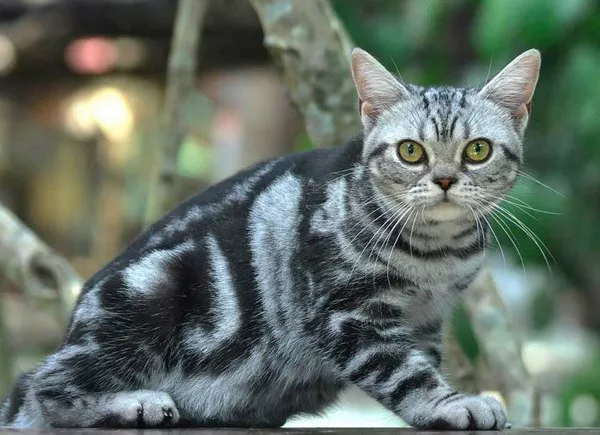Cats, with their enigmatic and independent nature, often leave their human companions pondering the mysteries of their lives. When it comes to feline pregnancy, deciphering the subtle signs becomes crucial for attentive cat owners. Whether you’re a seasoned cat enthusiast or a novice guardian, understanding the indicators of pregnancy in cats contributes to providing optimal care for both the expectant mother and her potential litter. In this comprehensive guide, we unravel the mysteries surrounding feline pregnancy, exploring the signs, stages, and essential considerations for a smooth and healthy pregnancy.
The Subtle Signs of Feline Pregnancy
1. Changes in Nipple Color and Size:
One of the earliest signs of cat pregnancy involves changes in the nipples. Around two to three weeks into pregnancy, a cat’s nipples may become pinker and slightly enlarged. This is often one of the first visual cues for attentive cat owners.
2. Behavioral Changes:
Pregnant cats may exhibit subtle shifts in behavior. Some become more affectionate, seeking additional attention from their owners. Others may display nesting behavior, rearranging bedding or seeking out secluded spots to create a cozy nest for their impending litter.
3. Increased Appetite:
A pregnant cat’s appetite may increase during the early stages of pregnancy. While this change may not be immediately noticeable, attentive owners may observe a gradual increase in food consumption.
4. Weight Gain and Enlarged Abdomen:
As the pregnancy progresses, a cat’s abdomen may begin to enlarge. This is more noticeable in the later stages, typically occurring around three to four weeks into the pregnancy. However, weight gain can be subtle, and it’s essential to consider the cat’s overall body condition.
5. Morning Sickness:
Similar to human pregnancies, some cats may experience a form of morning sickness during the early weeks of pregnancy. This can manifest as occasional vomiting.
6. Ultrasound Confirmation:
For a definitive confirmation of pregnancy, a visit to the veterinarian for an ultrasound is the most accurate method. This non-invasive procedure allows the veterinarian to visualize the developing kittens in the womb.
The Three Stages of Feline Pregnancy
1. Early Stage (0-3 Weeks):
During the first three weeks, physical changes may not be visibly apparent. However, behavioral changes and subtle signs, such as changes in nipple color, may be observed. This is the period when fertilization occurs and the embryos begin to develop.
2. Middle Stage (3-6 Weeks):
Around the third week, weight gain and abdominal enlargement become more noticeable. The veterinarian can confirm pregnancy through palpation during this stage. As the kittens continue to develop, the mother cat’s nutritional needs increase.
3. Late Stage (6-9 Weeks):
In the final weeks of pregnancy, the abdomen is prominently enlarged. The mother cat may display nesting behavior and seek out a quiet and comfortable place to give birth. The kittens are fully developed by the end of the eighth week.
Essential Considerations for a Healthy Feline Pregnancy
1. Nutrition:
Providing a balanced and nutritionally complete diet is crucial during pregnancy. High-quality cat food designed for pregnant or nursing cats meets the increased nutritional demands. Consult with the veterinarian to determine the appropriate diet.
2. Prenatal Veterinary Care:
Regular veterinary check-ups are essential throughout the pregnancy. The veterinarian can monitor the mother cat’s health, confirm the pregnancy, and address any potential complications.
3. Parasite Control:
Parasite control is vital for the health of both the mother cat and the developing kittens. Consult with the veterinarian to ensure a safe and effective parasite control plan.
4. Vaccination Status:
Confirm the mother cat’s vaccination status with the veterinarian. Vaccinations should be up-to-date to protect both the mother and the kittens.
5. Comfortable Environment:
Create a comfortable and quiet environment for the expectant mother. Provide a cozy and secluded space where she can nest and give birth.
6. Preparation for Birth:
Familiarize yourself with the signs of labor in cats. Be prepared with a suitable birthing box, clean towels, and contact information for emergency veterinary care.
Conclusion
Witnessing the journey of feline motherhood is both enchanting and rewarding for cat owners. As the expectant mother progresses through the stages of pregnancy, attentive care and a supportive environment contribute to a positive experience for both the cat and her future kittens.
Understanding the subtle signs, recognizing the three stages of feline pregnancy, and prioritizing essential considerations pave the way for a smooth and healthy pregnancy. With proper nutrition, veterinary care, and a nurturing atmosphere, cat owners can embark on the enchanting adventure of feline motherhood, welcoming a new generation of adorable kittens into their homes.


























